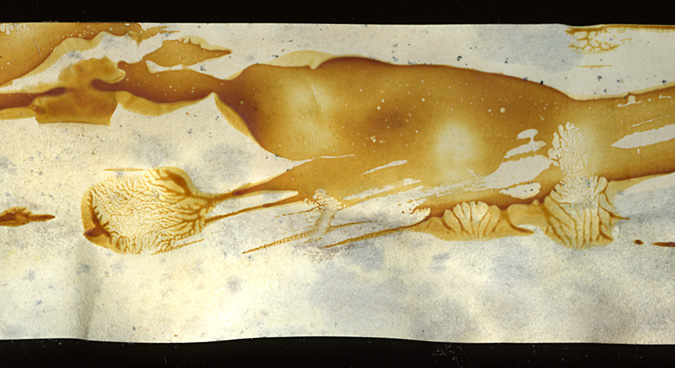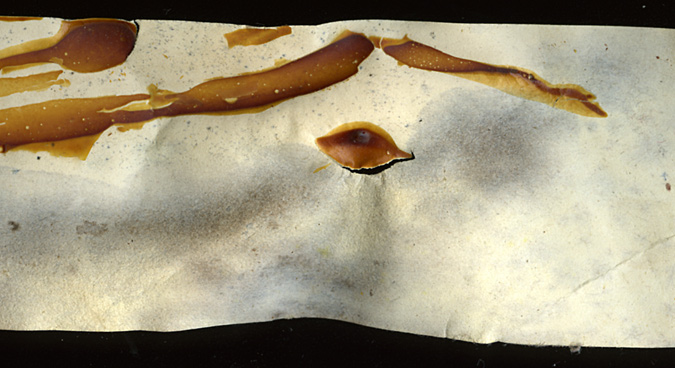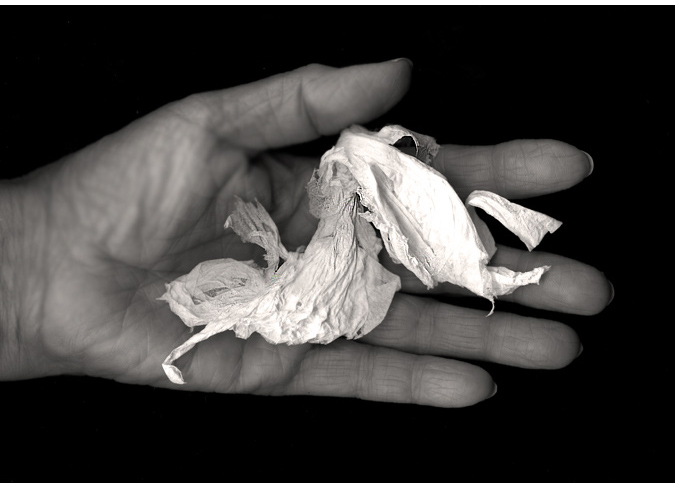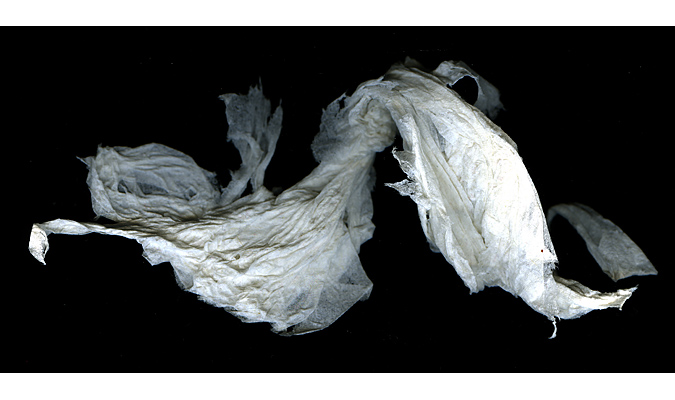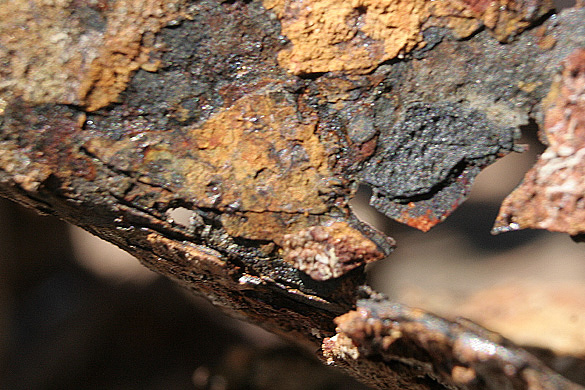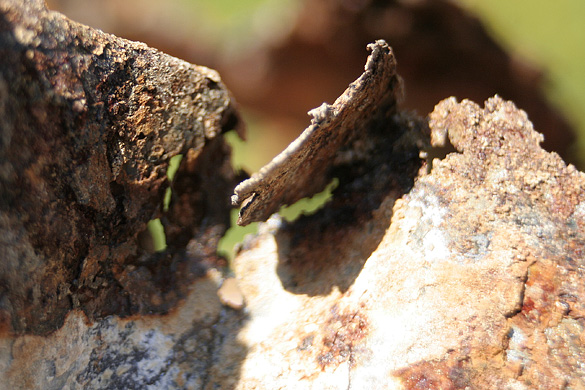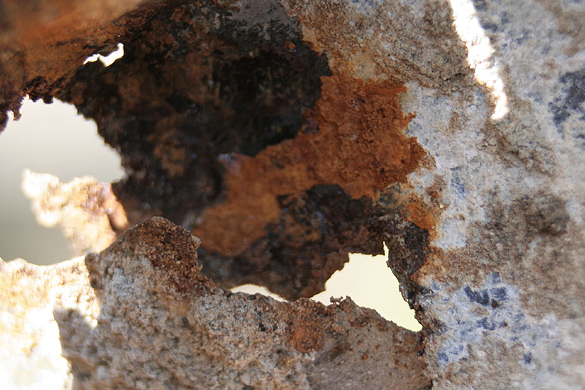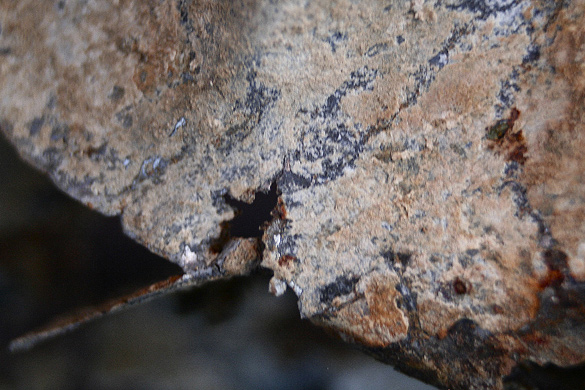You are browsing the Blog for Found Objects Archives - Marja-Leena Rathje.
found stains
About to throw out this dirty stained strip of paper, I looked closer and became quite intrigued by the marks which look as if made by a brush in an artist’s hand. About 5.5 x 27.5 cm (2″ x 11″), it’s too wide to show well here, so I’ve cropped some details to show below.
I may be strange, but I think these are beautiful! Hmm, how might I use them?
Added 28th July: a suddenly recalled and found related object
hand with tissue
One idea leads to another as I play with the scanner. I find myself returning to the idea of a series of smaller prints of images of hands with objects, like these ones. When and if I have enough of a collection, I may print these with my home printer.
As many readers know, I have done numerous ‘hand’ images on this blog. Some became a series of large prints in the HANDS series which I finished last year. These may be most quickly seen all together in the gallery if you have not already seen them.
a German cookbook
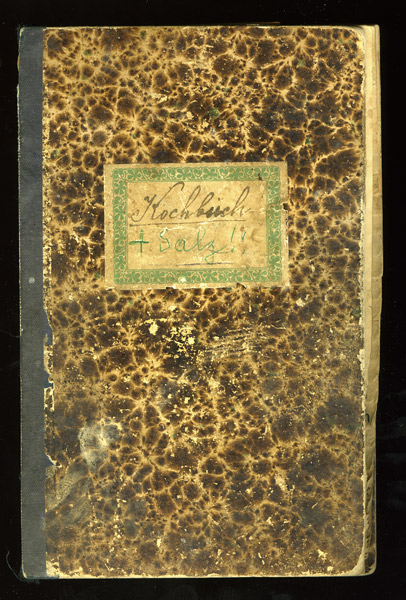
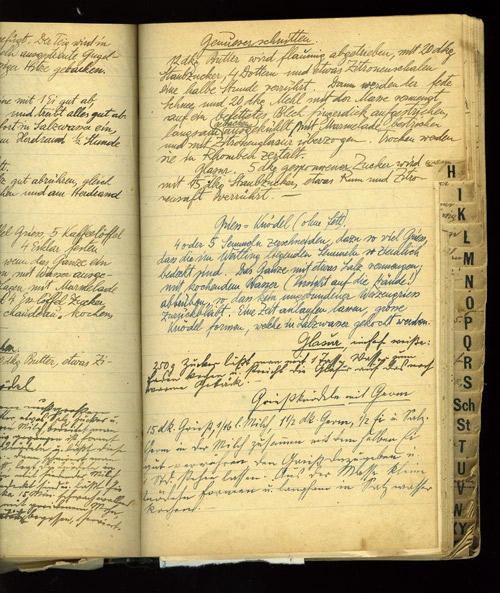
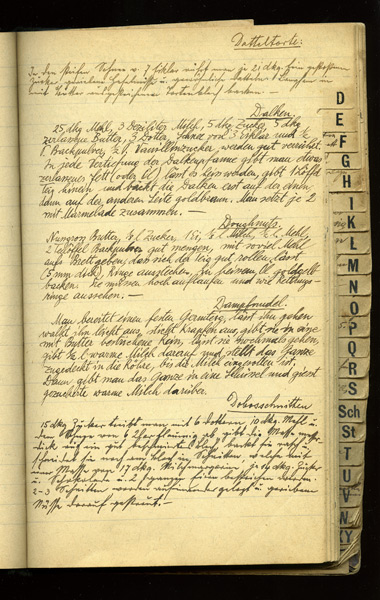
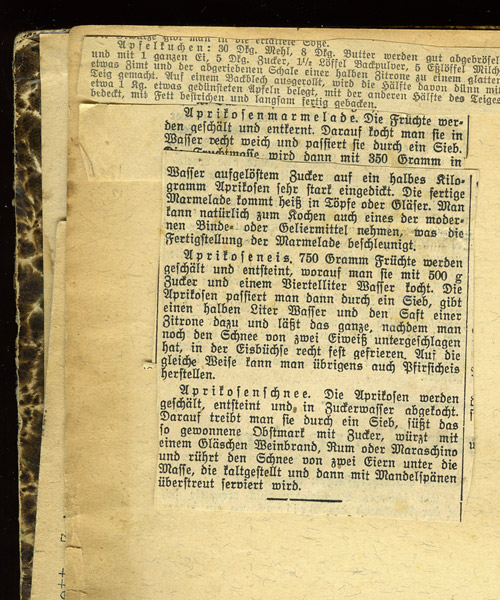
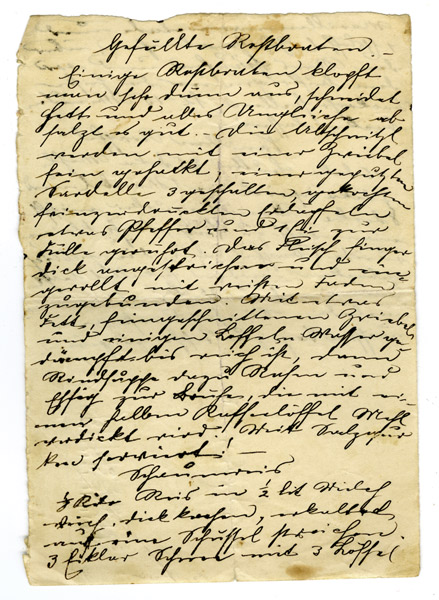
I have been peeking into some of my late mother-in-law’s boxes which my husband brought home from her house, now sold. Her obviously very old handwritten cookbook intrigued me, reminding me a little of my mother’s Finnish cookbook.
While my mother’s book was a published one, “Omi’s” is all handwritten by many different hands in an originally blank and indexed book. I imagine that her mother, grandmothers, aunts, sisters and friends may have written many of these, perhaps for her when she was a new bride, or when she was emigrating to Canada. The handwriting is exquisite and often seeming too tiny to read.
I don’t recognize her handwriting in the book itself unless it changed later, though some of the loose slips may be by her hand. Like in my mother’s cookbook there are numerous slips of loose recipes and clippings inserted throughout, and some glued in, like the one above with Gothic text. My German is poor, and the handwriting hard to read (even husband has trouble) but I do recognize a lot of kuchen (cake) recipes! Omi loved to bake cakes so I’m not surprised.
rusty can
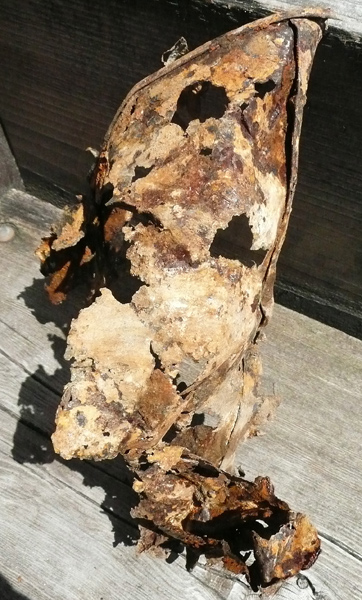
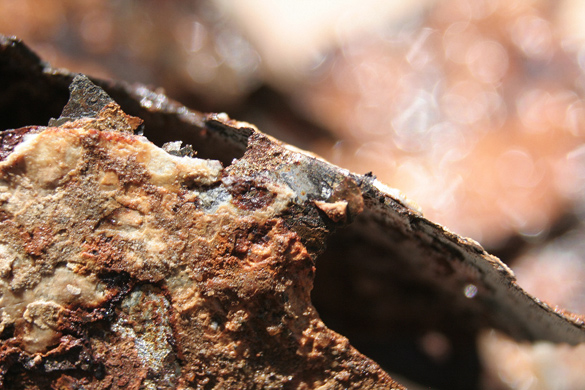
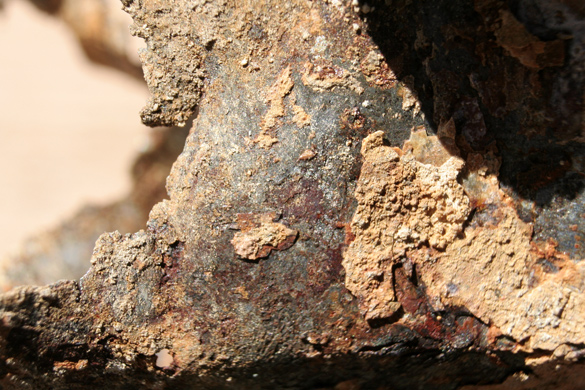
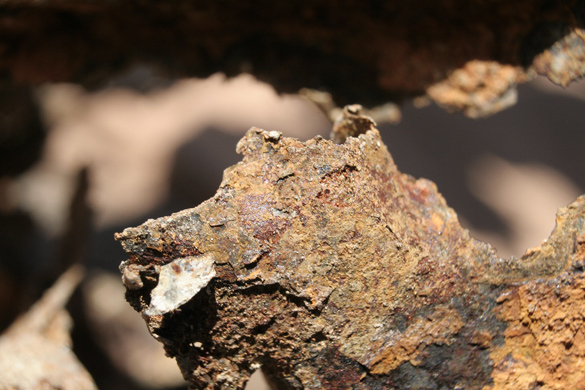
Another exciting unearthing in the garden! From the same area as the roots, this rusty and disintegrating metal object (a paint can?) is the kind of find that I love. It is a delight, as well as a challenge to photograph well since I’ve not done any macro shots for a while. I plan to do more of these.
I know, I know, rust objects do occupy a huge place in my photo collection. Here are just a couple amongst many favourites: a rust circle and treasure hunt. And of course, my Fragments series of prints consist of several rusty objects.
found art (2)


spotted on my messy potting table outdoors
folded paper, damp, stained, one of the ‘paper tears‘
escaped, blown here and weathered,
art by nature, like a soft dyed silk scarf
Related: the first “found art”
Finnish ABCs 2
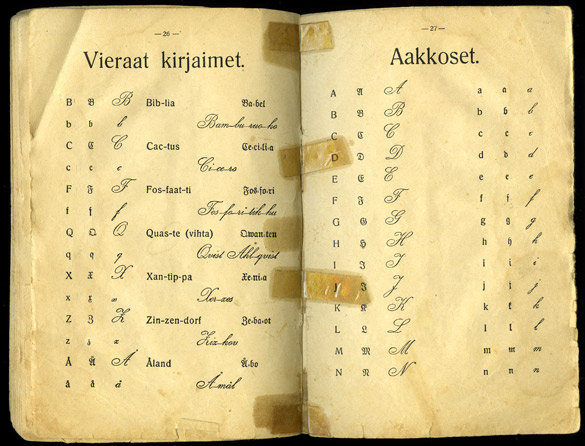
As mentioned earlier about this old Finnish primer, I became most fascinated by the variety of fonts shown side by side. Imagine a young child just learning the ABCs and beginning to read, also learning to read along with what I would call a regular print text, a German Gothic or fraktur font and a copperplate style script. I used to be able to read the Gothic in my childhood because the Finnish church in Winnipeg had very old hymn books with that font. Now I struggle with some of the letters, though the little tales in this reader really help with context. Hand writing styles surely aren’t that easy for new readers either.
I’ve zoomed in on a few pages of the alphabet itself below, so you can see how complex it all is. Vieraat kirjaimet translates as foreign letters, that is, those not part of the native Finnish alphabet. Aakkoset is alphabet.
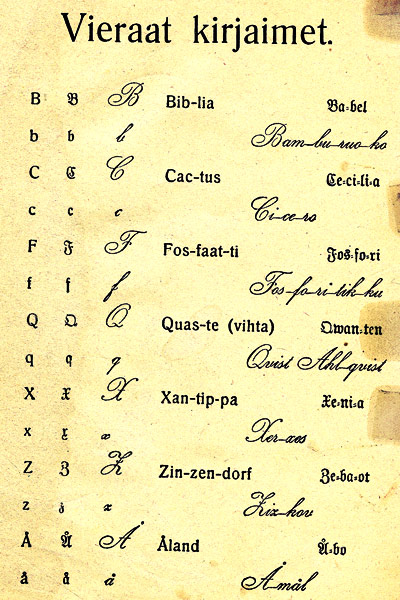
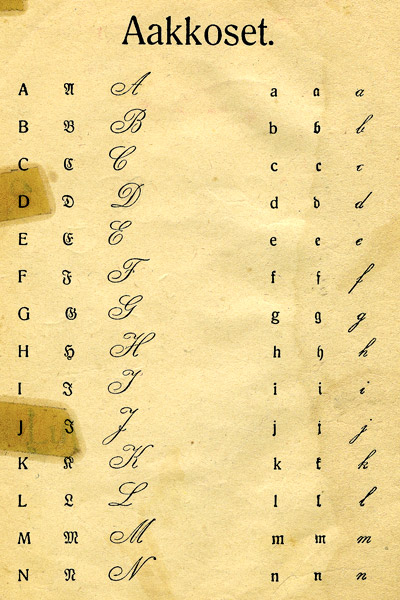
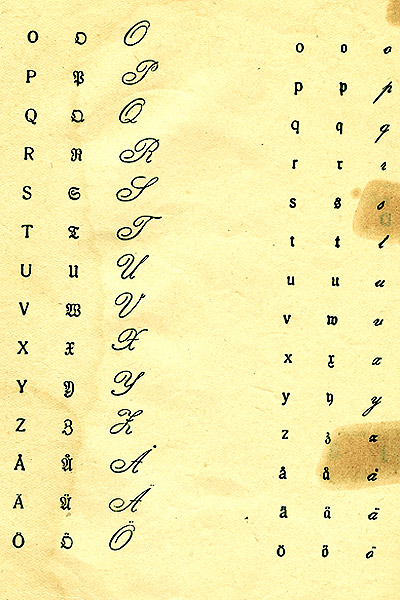
(Apologies with the varied colours of each page as I struggled to make the letters appear clearer and sharper.)
I just had to go find my own Finnish Aapinen, printed in 1954, to check out its fonts. The first part of the book has all capital letters, then soon after the small case are introduced along with it. Though there are a few other fonts later in the book, they are all fairly standard and easy to read. One page near the end shows a handwriting exercise on ruled paper like we see even today. Gothic and copperplate were not to be found.
Finnish ABCs
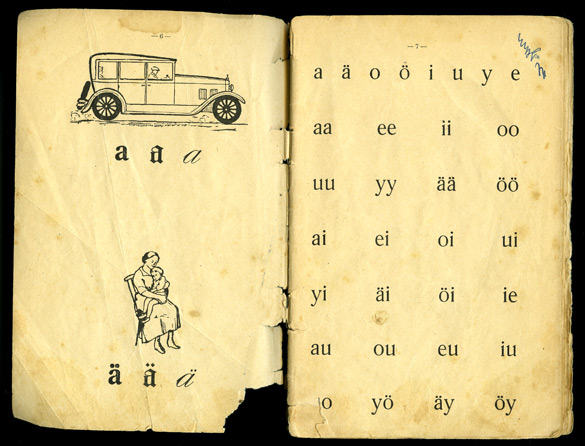
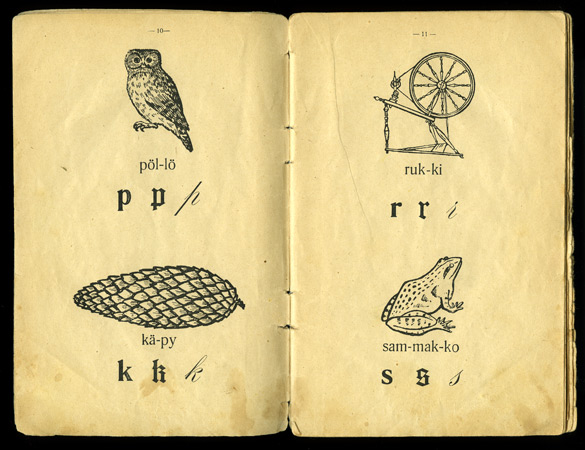
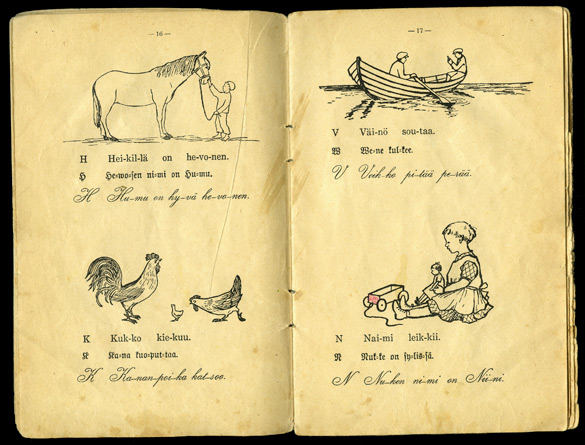
When I found my mother’s old Finnish cookbook, with it was a little aapinen, a Finnish ABC book or primer. A sad little thing without a cover, unlike this one, so I don’t know when it was published, possibly in the 1940s. I don’t recall if it was one of my books. Next time I will show you more pages of the fascinating fonts.


